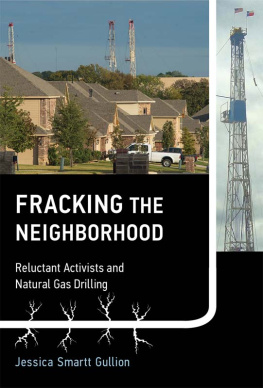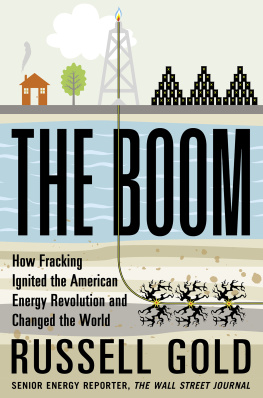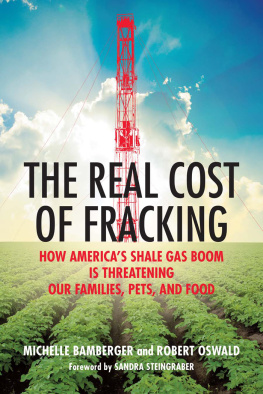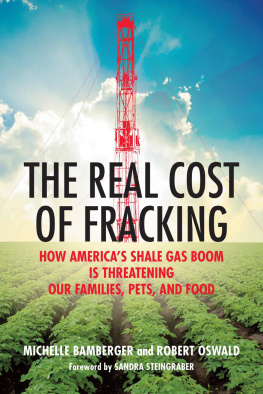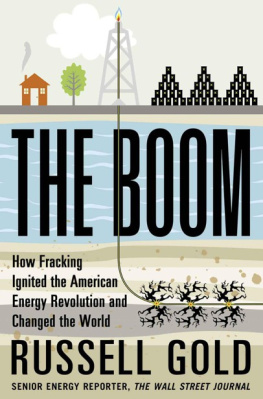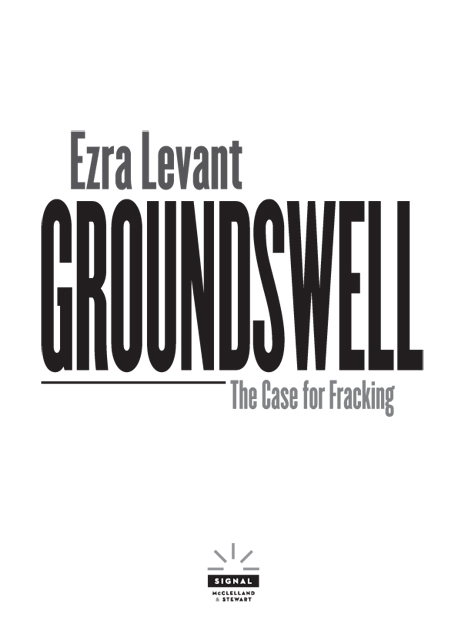ALSO BY EZRA LEVANT
Ethical Oil: The Case for Canadas Oil Sands
Shakedown: How Our Government Is Undermining Democracy in the Name of Human Rights
Copyright 2014 by Ezra Levant
Signal is an imprint of McClelland & Stewart, a division of Random House of Canada Limited, a Penguin Random House Company.
All rights reserved. The use of any part of this publication reproduced, transmitted in any form or by any means, electronic, mechanical, photocopying, recording, or otherwise, or stored in a retrieval system, without the prior written consent of the publisheror, in case of photocopying or other reprographic copying, a licence from the Canadian Copyright Licensing Agencyis an infringement of the copyright law.
Library and Archives Canada Cataloguing in Publication
Levant, Ezra, 1972
Groundswell / Ezra Levant.
ISBN 978-0-7710-4644-5
EBOOK ISBN 978-0-7710-4646-9
1. Hydraulic fracturing. 2. Gas well drilling. 3. Shale gas. 4. Shale oils. I. Title.
TN 880.2. L 49 2013 622.3381 C 2013-900697-4
Library of Congress Control number: 2013901599
McClelland & Stewart,
a division of Random House of Canada Limited
A Penguin Random House Company
One Toronto Street
Suite 300
Toronto, Ontario
M 5 C 2 V 6
www.randomhouse.ca
v3.1
Introduction
I magine if the United States suddenly discovered oil, tens of billions of barrels of oil, maybe even enough oil to rival Saudi Arabia. It wouldnt just make America richer. It would change the world.
Producing that oil would mean hundreds of thousands of new jobs in the American oil industry, and more indirectly everywhere. And then imagine if that happened in Canada. And Poland. And Ukraine. And a dozen other democracies.
Adding that much oil production to the worlds supply would also mean the price would fall, and so the price of everything made from oil would fall too, like gasoline and chemicals and plastic. And so would the cost of everything that runs on oil, not just what we use in our cars, but everything shipped on a truck or a plane.
But the real transformation would be political. America would no longer be importing nine million barrels of oil a day from foreign countries forking over about a billion dollars a day, much of it to hostile regimes like Saudi Arabia or Venezuela. In fact, those same tanker terminals currently importing foreign oil might even be turned around, if America produced a surplus, to ship U.S. oil to the world. Europes democracies, especially former Soviet bloc countries, would finally be truly free of Russias domination.
So it wouldnt just be about the cash. It would be about ending the insecurity of importing oil from dictators. It would be about freedom.
Well, all that just happened in America. And its about to happen in Europe, too.
Not with oil, but with its hydrocarbon cousin, natural gas, the cleanest-burning fossil fuel, the fuel used to heat home furnaces and cook on stovetops, and increasingly to fire up electrical power stations. All of a sudden, in the past ten years, America discovered it had staggering amounts of natural gas resources 664 trillion cubic feet more that just werent there before. If youre wondering, thats like adding twenty-six years of supply at the current U.S. rate of consumption (on top of conventional gas resources that would last sixty-five years).
But heres the miraculous part: the new gas was always known to be there. Until now, it just wasnt possible to recover it.
Conventional oil and gas production is like drilling into the centre of a watermelon, putting in a straw, and sucking out the juice. It works only when oil or gas is pooled in a porous rock, like rainwater soaking into a sandbox. And once you pump out the good stuff, youre done.
But enormous quantities of oil and natural gas arent in pools, ready to be pumped out. Theyre trapped, in tiny amounts, in the pores of fine-grained rocks called shale.
You cant drill for those droplets of gas or oil the conventional way. It would be like trying to use a straw to suck the juice from an apple.
But in 1947, the Stanolind Oil and Gas Corporation formerly J.D. Rockefellers Standard Oil of Indiana tried out an experiment to increase the production of a 2,400-foot-deep gas well in Grant County, Kansas. A thousand gallons of gelled gasoline were injected into the well under hydraulic pressure, to create little cracks in the limestone half a mile underground, with the hope of releasing the gas that was trapped in the porous rock. The process was called Hydrafrac, and it was patented in 1949. The Halliburton Oil Well Cementing Company was given an exclusive licence to use the process.
In the first year, Halliburton fracked 332 wells, and the process increased the average production of the wells by 75 per cent. Over the next fifty years, the process was repeated approximately one million times in the United States. But it wasnt until fracking was combined with another technology, horizontal drilling, that the fracking revolution took off and that extra 664 trillion cubic feet of gas moved from fantasy to reality.
Horizontal drilling is just what it sounds like to use the drinking straw analogy, its a bendy straw, that goes straight down, but once its deep underground it slowly curves until its horizontal. That doesnt just let the well travel along a seam of oil or gas for a much longer distance, it also reduces the number of drilling rigs needed on the surface. Instead of having many wells, all spread out, going straight down into the same geological formation, now one small pad on the surface can have many horizontal wells drilling down and then radiating out in different directions, like daisy petals, covering an area that used to need many drilling rigs. Horizontal wells drilled on land can even reach out under the sea.
It was that technological combination hydraulic fracturing plus horizontal drilling along with other improvements such as high-tech mapping that led to the new fracking revolution. It started where you might guess it would: just west of Southfork, the legendary ranch that was the setting of Dallas, the hit TV series set in the oil and gas industry.
There was always oil and gas activity in that part of Texas, in the geological formation called the Barnett Shale, but even J.R. Ewing would have been stunned at the transformation of the industry. The first horizontal fracked wells in Barnett were drilled about ten years ago, timidly at first: 400 in 2004. But in 2010 alone, 10,000 fracked wells were drilled there, and now fracked wells account for 70 per cent of the production in the area.
The technology has been proven in traditional oil and gas states like Texas, but now also in places that werent now sells to America. Its also why North Dakota has the lowest unemployment rate in the United States, an impossibly low 2.7 per cent.
Fracking has revived Americas oil industry. But it has positively revolutionized the natural gas industry, bringing so great a supply of natural gas onto the market that America is set to become a natural gas exporter and the price of gas has plummeted to historic lows.
Fracking really has turned the United States into the Saudi Arabia of natural gas. The beautiful technology with the ugly name is the hottest job-creator in America and has reduced the cost of nearly everything that needs energy to run.



